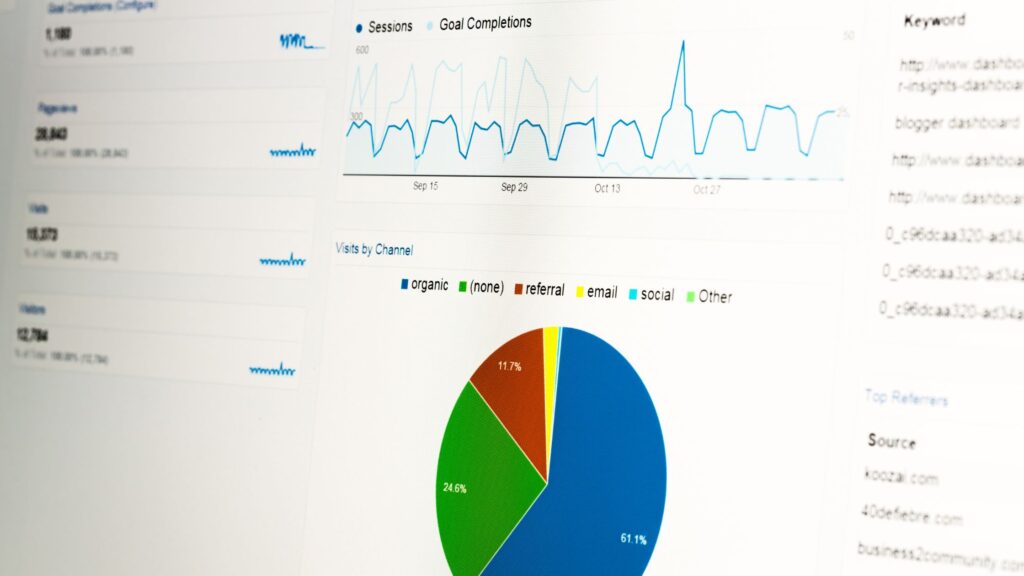In the fast-paced world of affiliate marketing, visibility is key. With millions of blogs vying for attention, mastering Search Engine Optimization (SEO) is vital for success. Whether you’re just starting out or looking to optimize your existing affiliate marketing blog, this guide will provide you with the essential strategies and insights to boost your rankings and increase your affiliate revenue.
Introduction
Understanding the importance of SEO in affiliate marketing
SEO is the backbone of affiliate marketing, serving as the primary driver of organic traffic to your blog. By optimizing your content for search engines, you increase your visibility and attract targeted visitors who are actively searching for the products or services you promote. Higher search engine rankings lead to more clicks, conversions, and ultimately, higher affiliate revenue. In a competitive landscape where millions of blogs are vying for attention, mastering SEO techniques is essential for standing out, establishing authority, and maximizing your earning potential in the affiliate marketing space.
Setting realistic goals for your blog’s SEO journey
Setting realistic goals for your blog’s SEO journey involves defining achievable milestones that align with your overall business objectives. These goals should consider factors like your current website metrics, industry competition, and available resources. Whether aiming to increase organic traffic, improve keyword rankings, or boost affiliate conversions, setting specific, measurable, and time-bound targets will provide clarity and motivation for your SEO efforts. By establishing realistic expectations and tracking progress along the way, you can chart a clear path towards success in the dynamic world of affiliate marketing.

1. Keyword Research
Exploring niche-specific keywords with high search volume
Conduct thorough research to uncover niche-specific keywords with significant search volume, ensuring your content targets the most relevant and sought-after terms.
Utilizing keyword research tools like Google Keyword Planner, SEMrush, or Ahrefs
Keyword research tools such as Google Keyword Planner, SEMrush, and Ahrefs help identify high-volume keywords crucial for optimizing content and improving search engine visibility.
Long-tail vs. short-tail keywords: finding the right balance for your content
Long-tail keywords are specific phrases with lower search volume but higher conversion potential, while short-tail keywords are broader terms with higher search volume and competition. Balancing both optimizes content reach and relevance.

2. On-Page Optimization
Crafting compelling and relevant meta titles and descriptions
Craft meta titles and descriptions that entice clicks by incorporating targeted keywords, offering value, and accurately summarizing content to engage users.
Optimizing headings (H1, H2, etc.) with targeted keywords
Optimizing headings involves strategically placing relevant keywords in H1, H2, etc., tags to improve search engine visibility and enhance content structure.
Incorporating keywords naturally within your content
Incorporate keywords seamlessly into your content, ensuring they flow naturally and enhance readability without compromising the quality or relevance of your message.
Utilizing descriptive alt tags for images
Alt tags are brief descriptions added to images on your website, aiding accessibility and helping search engines understand the content of the image.

3. Content Quality and Relevance
Creating valuable, informative, and engaging content that addresses your audience’s needs
Craft content that fulfills audience needs, offering valuable insights, information, and engagement, fostering a connection and building trust.
Keeping content fresh and up-to-date to maintain relevance
Regularly updating blog posts with new information, statistics, or insights ensures relevance, boosts credibility, and keeps readers engaged over time.
Utilizing multimedia elements such as videos, infographics, and interactive content to enhance user experience
Incorporate videos, infographics, and interactive content to engage users, diversify your content, and enhance the overall browsing experience on your affiliate marketing blog.

4. Link Building
Earning high-quality backlinks from reputable websites in your niche
Earning high-quality backlinks involves acquiring links from respected websites within your niche, boosting your blog’s credibility and authority in search engine rankings.
Guest blogging on relevant platforms to establish authority and drive traffic
Guest blogging involves writing articles for other websites in your niche, showcasing your expertise, and linking back to your own blog to drive traffic and build authority.
Internal linking: guiding users through your content and improving site structure
Internal linking enhances user navigation by strategically connecting relevant pages within your blog, improving user experience and site structure.

5. Mobile Optimization
Ensuring your blog is mobile-friendly to cater to the growing number of mobile users
Optimize your blog’s design and functionality for seamless viewing and interaction on mobile devices, catering to the increasing mobile user base.
Optimizing page speed for faster loading times on mobile devices
Optimizing page speed for mobile involves minimizing file sizes, leveraging browser caching, and optimizing images to ensure swift loading times on smartphones and tablets.
Implementing responsive design to provide a seamless user experience across devices
Responsive design ensures your website adapts to different screen sizes, providing an optimal viewing experience for users on various devices.

6. Technical SEO
Optimizing your website’s crawlability and indexability for search engines
Optimizing crawlability and indexability involves structuring your site for search engines to easily access, navigate, and include your pages in their search results.
Implementing schema markup to enhance rich snippets in search results
Schema markup is a code added to your website to help search engines understand its content better, leading to enhanced, visually appealing search results.
Fixing broken links and resolving crawl errors using tools like Google Search Console
Using Google Search Console, identify broken links and crawl errors on your site, then promptly fix them to ensure smooth navigation and better search engine visibility.

7. Monitoring and Analysis
Tracking your blog’s performance using tools like Google Analytics and Google Search Console
Google Analytics and Google Search Console help monitor your blog’s performance by providing insights on traffic, keyword rankings, user behavior, and website health.
Analyzing key metrics such as organic traffic, keyword rankings, and conversion rates
Analyzing organic traffic, keyword rankings, and conversion rates helps gauge SEO effectiveness, measure visibility, and optimize content for better performance and revenue generation.
Making data-driven decisions to refine your SEO strategy and maximize results
Analyze metrics like organic traffic, keyword rankings, and conversion rates to adjust and optimize your SEO approach effectively for better outcomes.
Pro Tips:
1. Diversify your traffic sources to reduce dependency on organic search traffic.
2. Build relationships with other bloggers and influencers in your niche to amplify your reach and attract quality backlinks.
3. Conduct regular SEO audits to identify areas for improvement and stay ahead of the competition.
Conclusion
By implementing these SEO strategies and techniques, you can enhance the visibility and authority of your affiliate marketing blog, driving more targeted traffic and increasing your affiliate revenue over time. Remember, SEO is not a one-time task but an ongoing process that requires dedication, patience, and continuous optimization. Start implementing these tips today and watch your blog soar to new heights in the search engine rankings!



